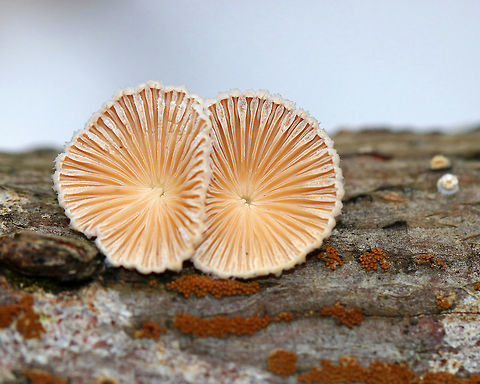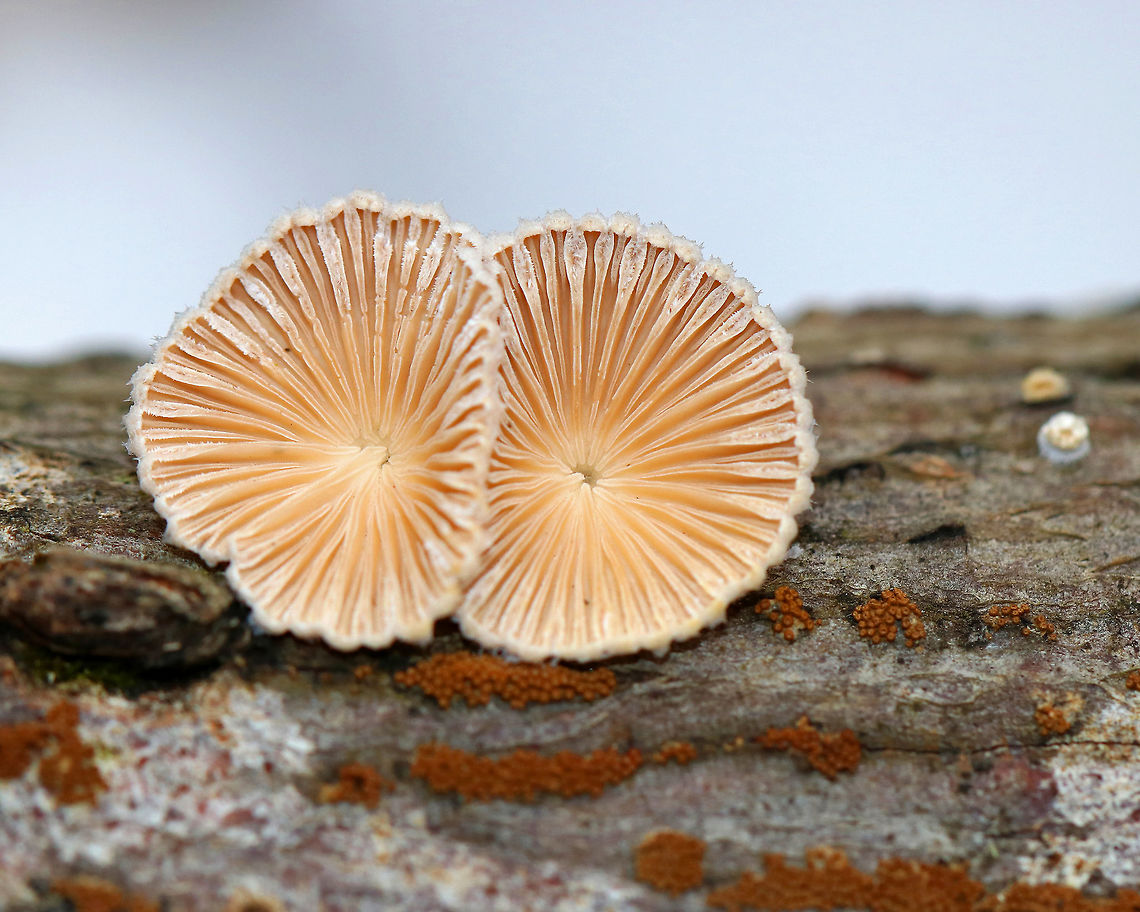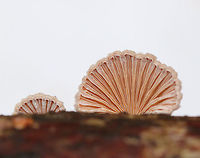
"Schizophyllum commune" is a species of fungus in the genus "Schizophyllum". The mushroom resembles undulating waves of tightly packed corals or a loose Chinese fan. Gillies or split-gills vary from creamy yellow to pale white in colour. The cap is small, 1–4 centimetres wide with a dense yet spongey body texture.
Similar species: Agaricales
By Christine Young
All rights reserved
Uploaded Dec 18, 2018. Captured Feb 19, 2018 13:28 in 5 East St, New Milford, CT 06776, USA.



comments (3)
Split Gills (Schizophyllum commune) is probably the most widely distributed fungus on the planet. Its omnipresence extends to every continent, except Antarctica. This humble mushroom looks boring when viewed from above, but the undersurface is quite spectacular. It has what appear to be gills, but are actually split folds that open and close as moisture levels vary. When it's dry, they shrivel up and close; when it's wet, they open and release spores. This "split gill" feature is unique to the genus Schizophyllum, and is a fantastic adaptation that helps the fungus withstand periods of dry weather.
As beautiful and practical as its gills are, Schizophyllum commune is famous for another reason: it's system of sexual reproduction. To understand fungal reproduction, you have to forget nearly everything you think you already know about how sex works. While humans have two basic biological sexes, fungi don't abide by gender paradigms. They are not limited by anatomical compatibility. In fact, Schizophyllum commune technically has over 28,000 different sexes. Seriously! The genetics are complicated and difficult to understand, but their huge number of sexes is an awesome adaptation that maximizes genetic diversity.
Here's (sort of) how it works...Fungal sexual reproduction involves getting two parental nuclei into the same cytoplasm. They accomplish this by touching cells. There are three main stages in this process: plasmogamy (joining of the parental cells), karyogamy (fusion of the parental nuclei), and meiosis (reduction division). In order to increase the odds of outcrossing (mating with nonsiblings), Schizophyllum commune has two different genetic loci to determine mating type (A and B). To further increase the odds, they have multiple alleles for each locus: the A gene has over 300 alleles, while the B gene has 90 alleles! Overall, there are more than 28,000 different combinations of A and B, which is basically the equivalent of having 28,000 different sexes. This crazy number encourages genetic diversity and helps keep mutations silent, which helps this fungus be such a global success. {Spotted in Connecticut, USA by JungleDragon moderator, Christine Young} #JungleDragon
Posted 6 years ago